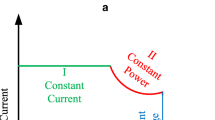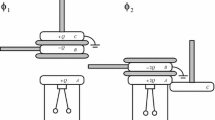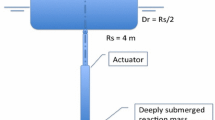Abstract
Ideally, the power output of electrosurgery units must be kept constant during its utilization despite the many differences in the resistance of tissues and the anatomic features of the patients being operated on. The aim of this paper is to present a method of designing the control stage of a high frequency electrosurgery equipment considering the adequate choice of passive components to reduce the variation of the power source voltage. The design focused on the automatic regulation of the average power output. The results obtained demonstrate that by using a simulation approach it is possible to predict the response of the electrosurgery unit output as a means to better regulate it.
Access this chapter
Tax calculation will be finalised at checkout
Purchases are for personal use only
Similar content being viewed by others
References
Feldman L, Fuchshuber P, Jones DB (2012) The SAGES manual on the fundamental use of surgical energy (FUSE), 1st edn. Springer, New York
Tokar JL, Barth BA, Banerjee S et al (2013) Electrosurgical generators—technology status evaluation report. Gastrointest Endosc 78:197–208. https://doi.org/10.1016/j.gie.2013.04.164
Carr-Locke DL, Day J (2011) Principles of electrosurgery:125–134
International Electrotechnical Commission IEC (2017) IEC 60601-2-2:2017—Medical electrical equipment—Part -–2: particular requirements for the basic safety and essential performance of high frequency surgical equipment and high frequency surgical accessories
Abraham IP, Keith Billings TM (2009) Switching power supply design, 3rd edn.
Maniktala S (2012) Switching power supplies A-Z
Bronzino JD (2006) The biomedical engineering handbook: medical devices and systems, 3rd edn. CRC Press, Hartford, Connecticut, U.S.A.
Salam MA, Rahman QM (2018) Fundamentals of electrical circuit analysis. Springer Singapore
Sandler SM (2006) Switch mode power supply simulation designing with SPICE3, 1st edn. McGraw-Hill, New York
Conflict of Interest
The authors declare that they have no conflict of interest.
Author information
Authors and Affiliations
Corresponding author
Editor information
Editors and Affiliations
Rights and permissions
Copyright information
© 2022 Springer Nature Switzerland AG
About this paper
Cite this paper
Camilo, P.H.D., Cestari, I.A. (2022). A Design Strategy to Control an Electrosurgery Unit Output. In: Bastos-Filho, T.F., de Oliveira Caldeira, E.M., Frizera-Neto, A. (eds) XXVII Brazilian Congress on Biomedical Engineering. CBEB 2020. IFMBE Proceedings, vol 83. Springer, Cham. https://doi.org/10.1007/978-3-030-70601-2_149
Download citation
DOI: https://doi.org/10.1007/978-3-030-70601-2_149
Published:
Publisher Name: Springer, Cham
Print ISBN: 978-3-030-70600-5
Online ISBN: 978-3-030-70601-2
eBook Packages: EngineeringEngineering (R0)




